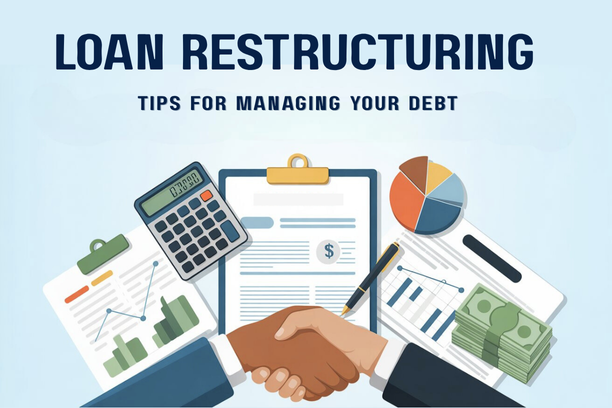For a business that has successfully navigated the startup phase, the next major milestone is often expansion. Whether it’s to open a new branch, acquire new equipment, or launch a new product line, expansion requires a significant infusion of capital. While a business can fund this growth with its own savings, a loan is often the most strategic way to finance a major project without depleting working capital. This guide explores the best loan options for a business expansion, helping you identify the right financial tool for your company’s growth plan.
The Primary Loan Types for Expansion
The type of loan you choose to finance a business expansion should be perfectly aligned with the purpose of that expansion. An expansion project can be a one-time, high-cost investment or a series of smaller, ongoing expenditures. Understanding the difference between a term loan and a credit line is the first step toward making a strategic decision that supports your business’s short-term and long-term goals.
Securing Long-Term Growth with a Term Loan
A term loan is a lump-sum financing option that is ideal for businesses with a specific, long-term need for capital. It is the perfect tool for funding major, one-time investments that have a long-term return on investment. This includes projects such as purchasing a commercial property, building a new factory, or acquiring a high-value piece of machinery or equipment. The bank provides the full loan amount upfront, and the borrower repays it over a fixed period, typically with a structured monthly amortization. This predictable payment schedule makes it easy to budget for the future
The key feature of a term loan is its purpose: to fund a strategic, long-term project. The loan amount can be substantial, and the repayment terms can be as long as 10 years, which allows a business to fund a major expansion without placing an undue strain on its monthly cash flow. The collateral for a term loan is often the asset being purchased, which helps the bank manage its risk and can make the interest rates more favorable. Major banks like BPI and BDO offer term loans specifically for business expansion.
For an established and profitable business with a clear vision for growth, a term loan is the most powerful and effective financing option. It provides the capital you need to finance a major project and can significantly accelerate your business’s growth. However, a term loan is not suitable for a business that needs flexible, day-to-day funding. For that purpose, a revolving credit line is a better option.
Ensuring Financial Flexibility with a Revolving Credit Line
In contrast to a term loan, a revolving credit line is a flexible, short-term financing option designed to meet a business’s day-to-day operational needs during an expansion. It is best used for managing working capital, purchasing inventory for a new branch, or covering the initial costs of launching a new product line. The bank provides a pre-approved credit limit that your business can draw from as needed. As you repay the funds, the available credit is replenished, allowing you to borrow again and again up to your approved limit.
The main advantage of a credit line is its flexibility. It functions like a financial safety net, providing a ready source of funds for unexpected expenses or urgent needs that arise during a business expansion. You only pay interest on the amount you actually use, which makes it a cost-effective solution for short-term needs. For an SME with inconsistent cash flow or a highly seasonal business model, a credit line is an invaluable tool for maintaining liquidity.
The repayment terms for a credit line are different from a term loan. It is typically valid for one year and is subject to annual renewal. This gives your business continuous access to funds without the need for a new application. For an SME that needs funds for its daily operations during a period of rapid expansion, a credit line is a better option than a term loan.
Key Requirements and Factors to Consider
Once you have identified the type of loan you need, the next step is to prepare for the application process. A loan for business expansion is a significant commitment, and banks have a rigorous set of requirements for an established business. However, by having all your documents in order and considering all the key factors, you can increase your chances of a successful application.

Essential Documents and Requirements
A business expansion loan is an investment for the lender, and they need to see a clear plan for a return on that investment. The first set of documents you need to provide is your business’s legal papers, including your SEC or DTI Registration, Mayor’s Permit, and BIR Certificate of Registration. These documents prove that your business is a legitimate and officially registered entity in the Philippines.
In addition to your legal documents, a bank will require a comprehensive overview of your business’s financial health. You must provide your business’s Audited Financial Statements (AFS) and Income Tax Returns (ITR) for the last three years. These documents provide a comprehensive overview of your business’s profitability, liquidity, and overall financial performance. The bank will review your balance sheet, income statement, and cash flow statement to assess your ability to repay the loan. You will also need to provide your business’s bank statements for the last six months.
For a business expansion loan, a lender may also require a detailed business plan. This plan should outline the specific goals of the expansion, how the funds will be used, and the projected return on investment. A well-written business plan sends a strong signal to the bank that your business is professionally managed and has a clear vision for growth.
Evaluating Your Options: Interest Rates and Beyond
When comparing loan options for a business expansion, the interest rate is a critical factor. However, it is not the only one. You should also consider the loan term and the repayment schedule. A loan with a lower interest rate may have a shorter repayment term, which can increase your monthly amortization and place a strain on your cash flow. A loan with a longer repayment term may have a slightly higher interest rate, but it can make your monthly payments more manageable.
You should also consider the fees and charges associated with the loan. These can include a processing fee, a documentary stamp tax, and a late payment fee. You should also ask about the collateral requirements. A secured loan will typically have a lower interest rate, but it requires you to provide a high-value asset as collateral. An unsecured loan has a higher interest rate but does not require collateral. You should also consider alternative financing options, such as government loans from agencies like SB Corp, which often have lower interest rates and more lenient requirements.
By carefully evaluating all your options and preparing a comprehensive application, you can increase your chances of securing the financing you need to take your business to the next level. A business expansion loan is a strategic tool, and choosing the right one is a crucial step toward achieving your growth goals.
Conclusion
Financing a business expansion is a critical step for any entrepreneur. While a term loan is the ideal option for a major, one-time project, a revolving credit line is a better option for managing day-to-day operational needs. By understanding the unique requirements of each loan and carefully evaluating all your options, you can find the perfect financing solution for your business’s growth.













